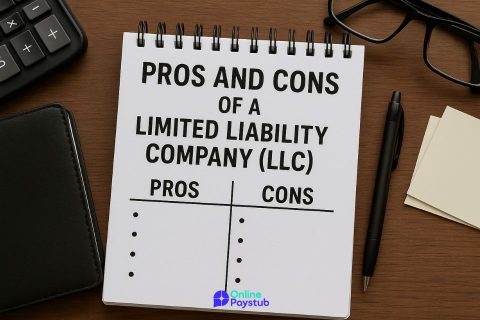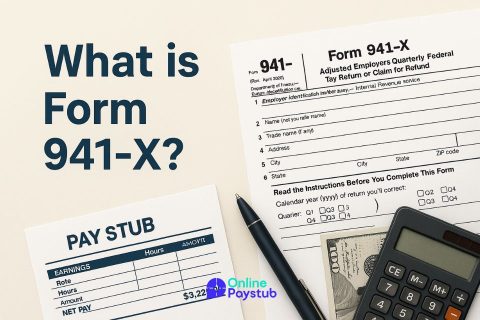The Low Income Housing Tax Credit (LIHTC) is the United States’ primary tool for incentivizing private investment in affordable rental housing. Authorized under the Tax Reform Act of 1986, this program provides tax credits to developers in exchange for building or rehabilitating housing units reserved for low-income tenants. Unlike traditional subsidies, LIHTC leverages private capital, aligning public goals with investor interest.
At its core, LIHTC functions as a dollar-for-dollar reduction in federal tax liability. Rather than offering direct funding, the government awards these credits to developers, who in turn attract equity from investors. The program significantly reduces financing costs, making otherwise financially unfeasible projects viable.
Each state receives an annual allocation of tax credits based on population. State housing finance agencies are responsible for distributing these credits through Qualified Allocation Plans (QAPs), which outline specific selection criteria and project priorities. While rooted in federal legislation, the administration and execution of LIHTC occur largely at the state level, creating flexibility in implementation.
As of today, LIHTC supports the creation of approximately 100,000 affordable units annually and accounts for nearly all new income-restricted rental housing in the country. Its success stems from a consistent funding mechanism, private sector discipline, and long-term affordability requirements.
Mechanics of the Tax Credit System
The Low Income Housing Tax Credit operates on a set of financial and regulatory principles that define how credits are calculated, awarded, and claimed. These mechanics are essential for developers, investors, and regulatory agencies to assess project viability and ensure compliance over time.
Each eligible development must meet specific criteria related to rent restrictions and tenant income levels. Projects must set aside a minimum percentage of units typically 20% for tenants earning 50% or less of Area Median Income (AMI), or 40% for those at or below 60% of AMI. Some developments may opt for the income averaging provision, targeting households across income tiers, provided the average does not exceed 60% AMI.
The amount of tax credit a project can claim is based on its “eligible basis” the depreciable costs of development, excluding land and is multiplied by an applicable percentage rate (generally 9% or 4%, depending on the financing structure). This generates the annual credit allocation, which is claimed over a 10-year period. The total equity raised through syndication is directly tied to this figure.
Developers typically do not use the credits themselves. Instead, they partner with investors often large corporations who purchase the credits in exchange for equity in the project. This partnership is structured through a limited partnership or LLC, in which the investor is the limited partner and the developer serves as the managing member or general partner.
The Internal Revenue Service (IRS), under Section 42 of the Internal Revenue Code, oversees the federal framework of the program. State agencies enforce compliance locally, requiring detailed cost certifications, tenant income documentation, and regular audits throughout the project’s lifecycle.
Investor Incentives and Equity Structures
The Low Income Housing Tax Credit offers a compelling financial structure for institutional investors, primarily corporations, to receive a predictable return while supporting affordable housing development. The credits reduce the investor’s federal tax liability directly, creating a stable and quantifiable incentive that often complements broader Environmental, Social, and Governance (ESG) strategies.
Investors typically enter the LIHTC space through syndication a process in which the tax credits are packaged and sold to one or more investors in exchange for equity contributions to the development partnership. These partnerships are usually structured as limited partnerships (LPs) or limited liability companies (LLCs), with the developer acting as the general partner (GP) or managing member and the investor as a limited partner with passive ownership rights.
The benefit to the investor is twofold:
- Tax Credit Utilization: Investors receive a fixed annual tax credit over a 10-year period. The total amount is determined based on the eligible basis and the applicable credit percentage.
- Loss Allocation: Because these are real estate partnerships, investors may also benefit from pass-through losses, particularly depreciation deductions, further reducing taxable income.
To mitigate risk, investors typically require:
- Third-party cost certification
- Proven development experience
- Guarantees on compliance and tax credit delivery from the developer
Moreover, investors often work with syndicators specialized firms that aggregate investor capital and match it with suitable LIHTC deals. Syndicators handle due diligence, underwriting, asset management, and compliance oversight, acting as intermediaries between developers and institutional capital.
This structure has proven resilient over decades, largely due to the financial predictability of the credits and strict compliance enforcement, which ensures that investors can rely on the value of their credit stream. As a result, LIHTC investments are often perceived as low-risk within the realm of real estate finance.
4% vs. 9% Credits: Key Differences and Use Cases
The LIHTC program offers two primary types of tax credits: 4% and 9%. While both serve the same overarching goal of supporting affordable rental housing, they differ significantly in allocation method, financing structure, and project competitiveness.
9% Credit
The 9% credit is the more competitive and generous option. It is allocated through a formal application process managed by state housing finance agencies. Projects seeking this credit typically undergo two funding rounds per year and must demonstrate alignment with the state’s Qualified Allocation Plan (QAP). These credits are generally reserved for developments without tax-exempt bond financing and are often used for new construction or substantial rehabilitation projects.
9% credits cover a larger share of project costs, resulting in a higher equity contribution and lower reliance on debt. This structure makes 9% deals especially suitable for projects in markets with limited rental income potential, where minimizing operating costs is essential to financial feasibility.
4% Credit
The 4% credit is automatically available to projects that finance at least 50% of their development costs with tax-exempt bonds. Because these credits are not subject to a competitive allocation process, they are accessible year-round, provided the development meets all applicable federal and state requirements.
Although the 4% credit yields less equity due to the lower credit percentage it remains an important tool for larger developments, preservation efforts, or mixed-financing projects. Many developers combine 4% credits with other funding sources such as soft loans, federal grants, or local subsidies to close financial gaps.
Choosing between 4% and 9% credits often depends on the project’s scale, location, and capital stack. While the 9% credit provides deeper subsidies and is ideal for more challenging markets, the 4% credit’s broader availability makes it suitable for projects requiring expedited financing or less reliance on competitive scoring.
Eligibility Criteria for Tenants and Developers
The success of LIHTC depends on clearly defined eligibility standards for both the developers who implement the projects and the tenants who ultimately reside in them. These criteria are rooted in federal law but often tailored through state-level oversight and enforcement.
Tenant Eligibility
Tenants must meet income limits based on the Area Median Income (AMI). A common threshold is either:
- 20% of units reserved for households earning 50% or less of AMI, or
- 40% of units for those at or below 60% of AMI.
With the introduction of income averaging, developments can now serve a broader range of incomes, provided that the average across all tax credit units remains at or below 60% AMI. This flexibility allows for more economically diverse tenant populations while maintaining affordability.
Tenants must provide documentation such as income statements, tax returns, and employment verification. Property managers are responsible for verifying and certifying tenant eligibility both at move-in and annually throughout the compliance period.
Developer Eligibility
LIHTC is open to both nonprofit and for-profit developers. However, all applicants must meet minimum experience standards, demonstrate site control, and provide a viable financing plan. States evaluate proposals based on the Qualified Allocation Plan, which prioritizes developments that:
- Address high-need populations
- Revitalize distressed areas
- Promote long-term affordability
- Exhibit sound financial underwriting
Nonprofit developers may benefit from special allocations or point advantages within the QAP to encourage mission-driven housing development. In some jurisdictions, nonprofit status can even make a project eligible for set-aside credits.
All developers must undergo a rigorous review, including background checks, financial audits, and evaluation of prior project performance. In many cases, only those with a proven record of successful affordable housing development are competitive for 9% credits.
A firm understanding of these eligibility requirements is critical for stakeholders aiming to participate in LIHTC, whether as applicants, operators, or investors.
State Allocation: The Role of Housing Finance Agencies
While LIHTC is a federally authorized program, its administration is decentralized. Each state is responsible for allocating credits within its jurisdiction through designated Housing Finance Agencies (HFAs). These agencies are tasked with interpreting federal regulations, setting local priorities, and overseeing project compliance over the long term.
Credit Allocation Process
Each state receives an annual ceiling of LIHTC based on population figures. HFAs then distribute these credits through an application process governed by the state’s Qualified Allocation Plan (QAP). The QAP outlines selection criteria, scoring methodologies, and policy objectives. These may include:
- Geographic targeting (e.g., rural vs. urban)
- Preservation of existing affordable housing
- Energy efficiency standards
- Proximity to public transit or employment centers
States typically conduct two competitive rounds per year for 9% credits. For 4% credits tied to tax-exempt bonds, applications are accepted on a rolling basis, subject to available bond volume and compliance with minimum thresholds.
Role of the Qualified Allocation Plan (QAP)
The QAP is central to how each state operationalizes LIHTC. While the federal code provides the framework, the QAP enables each HFA to adapt the program to local housing needs and policy goals. For example, a state with high rates of homelessness may prioritize permanent supportive housing, while another may emphasize workforce housing near growing employment hubs.
Public input is usually solicited during the drafting of the QAP. Final versions must be approved by the state’s housing board and the governor. This ensures both public accountability and alignment with broader housing strategies.
Oversight and Monitoring
Beyond allocation, HFAs are responsible for long-term compliance monitoring. This includes tenant file audits, physical inspections, and reporting enforcement actions to the IRS. Agencies also maintain public databases of active LIHTC projects, track affordability periods, and review changes in ownership or management.
The role of state agencies is not simply administrative. They serve as gatekeepers, strategists, and regulators, shaping how LIHTC is used to meet evolving housing challenges across regions.
Syndication and Risk Management in LIHTC Deals
Syndication is a central mechanism in LIHTC financing, enabling developers to convert future tax credits into present-day equity. This process not only reduces the need for traditional debt but also spreads risk across multiple parties while introducing private-sector discipline into affordable housing development.
In a typical syndication structure, a developer forms a limited partnership or LLC and becomes the managing entity. The tax credits allocated to the project are sold to investors—most often through a syndicator who pools capital from multiple corporate investors. In return for their equity contribution, these investors receive the right to claim tax credits over a 10-year period and may also benefit from allocated depreciation losses.
Syndicators play a key intermediary role. They conduct due diligence, structure the investment, and ensure ongoing compliance with Section 42 requirements. Their presence allows investors to participate in LIHTC without directly managing real estate or overseeing property operations.
The amount of equity a project can attract depends on several factors:
- Total eligible basis and applicable credit percentage
- Market pricing of tax credits (e.g., $0.90 to $1.10 per credit dollar)
- Strength of the developer’s track record
- Location, market conditions, and underwriting assumptions
Risk Management Considerations
While LIHTC investments are considered low-risk compared to other real estate assets, they are not without exposure. Investors face recapture risk if the project fails to meet compliance requirements—such as tenant income limits or rent caps within the 15-year compliance period. In such cases, the IRS may reclaim previously issued credits, along with interest and penalties.
To mitigate these risks, investment agreements often include:
- Operating guarantees from developers
- Reserve requirements (e.g., replacement reserves, operating deficit reserves)
- Detailed compliance monitoring procedures
- Removal provisions if the managing partner fails to perform
Syndicators also conduct asset management throughout the project’s life cycle, reviewing financial statements, occupancy reports, and inspection results. Their involvement adds a layer of oversight that contributes to the program’s historically low default rate.
Effective syndication and risk management ensure that LIHTC remains a reliable financing model for both developers and institutional investors, balancing social outcomes with financial accountability.
Challenges Post-Compliance Period
The LIHTC program imposes a 15-year compliance period during which all affordability and occupancy requirements must be strictly followed. In many cases, an additional 15-year extended use period applies, resulting in a 30-year commitment to affordability. However, once the initial compliance phase ends, developers and investors face a range of operational and strategic decisions that can affect the future of the property.
Expiring Restrictions and Market Transition
One of the primary challenges after the compliance period is determining whether to maintain affordability or convert the property to market-rate units. Some owners choose to exit the program if allowed under the original agreement, especially in high-demand areas where market rents far exceed restricted levels.
However, transitioning a property away from affordability may not be straightforward. Many states require properties to go through a formal process such as offering the building to a qualified preservation buyer before exiting affordability obligations. Additionally, there may be deed restrictions or funding sources that extend affordability requirements beyond the tax credit period.
Physical Asset Management
Another challenge relates to the physical condition of properties. Many LIHTC-funded buildings require capital improvements after 15 years of operation. Deferred maintenance, outdated systems, and increasing operational costs can affect long-term sustainability. Developers must decide whether to reinvest in the property, seek additional financing (including resyndication), or transfer ownership.
For properties that were not adequately capitalized during the initial development phase, the risk of deterioration is higher, which can impact tenant quality of life and local housing stock stability.
Ownership and Partnership Restructuring
Post-compliance, the ownership structure often changes. Investors typically exit the partnership after claiming their full tax benefit. This may trigger a revaluation of the asset or introduce new partners. Developers often acquire full ownership at this stage, but they must ensure continuity in management, compliance (during extended use), and capital planning.
If resyndication is pursued, the project must go through a new application cycle, meet updated QAP requirements, and potentially adhere to stricter underwriting standards. This can be a viable path for extending affordability and accessing new equity, but it requires a clear repositioning strategy and updated financial modeling.
Preservation Policy Landscape
Policymakers and advocates are increasingly focused on preserving LIHTC units as long-term affordable housing. Several states offer incentives for maintaining affordability beyond the mandatory period, while federal proposals aim to simplify resyndication and provide additional support for recapitalization.
Navigating the post-compliance period requires not only financial planning but also alignment with evolving regulatory and policy environments.




No comments to show.